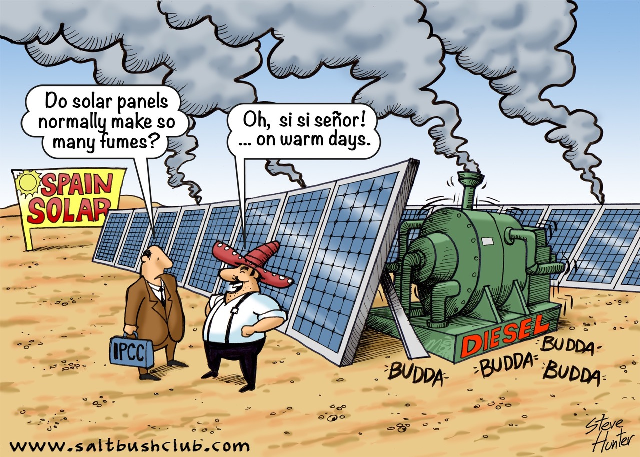A diesel in the shed
You can have your solar panels
and your turbines on the hills;
You can use the warmth of sunshine
to reduce your heating bills.
You can dream you’re self-sufficient
as you weed your vegie bed;
As long as you make sure to keep
A diesel in the shed
When I was a kid living on a small dairy farm in Queensland, we relied on green energy — horses and human muscles provided most motive power; firewood and beeswax candles supplied heat and light; a windmill pumped water and the sun provided solar energy for drying clothes and growing crops, vegies, and pastures. The only “non-green” energy used was a bit of kerosene for the kitchen lamp and the dairy lantern, and petrol for a small Ford utility for a trip to town every fortnight.
Our life changed dramatically when we put a diesel in the dairy. This single-cylinder engine drove the milking machines, the cream separator, and a small electricity generator, which charged 16 lead-acid two-volt batteries sitting on the veranda. This is the exact same diesel engine (built in Toowoomba) we had in our dairy in the late 1940s.
Our 32-volt DC system powered our “modern” marvel — bright light at any time, in every room, at the touch of a switch.
There were no electric self-starters for diesels in those days — just a heavy crank handle and a big flywheel. But all that effort, noise, and fumes were superseded when the house and the dairy got connected to clean silent “coal power by wire.” Suddenly the trusty “Southern Cross” diesel engines disappeared from Australian sheds and dairies.
In less than one lifetime, firewood, candles, horses, and kerosene were replaced by diesel and petrol engines plus clean, silent coal-powered electricity.
Today, after Aussies have enjoyed decades of abundant reliable cheap electricity from coal, green energy gambling has taken Australia back to that era which kept a diesel in the shed.
Green energy has a union that works to rules. If winds are too strong or too weak, they down tools and the turbines go silent. And their mates running the solar panels won’t work at night and also produce nothing on cloudy days. If we try to fill the gaps with battery power, where do we get the electricity to recharge the batteries and pump the hydro water back up the hill to keep the lights on?
Tasmania and South Australia are the greenest states of Australia. SA demolished their last coal-fired power station with glee and Tasmanian Greens even oppose hydro and wind power.
Tasmanians get their electricity mainly from hydro assets created long ago by their more productive ancestors. When a long drought caused a shortage of hydro-energy they became reliant for up to 40% of their electricity needs on the Bass-link undersea cable bringing electricity from reliable coal-fired stations in Victoria and NSW. However the overloaded Bass Link cable failed, and an old gas-powered station was brought back into service to keep the lights on (importing gas from Victoria). Subsequently Tasmanian politicians hurriedly put 150 diesel generators in their sheds.
South Australia is the next greenest state in Australia, hosting about one-third of Australia’s wind turbines. These were force-fed into existence by mandatory green energy targets and tax benefits. In a burst of green destruction, they also closed their gas-fired power stations and gleefully demolished their last coal-fired station. However, they were left in the dark when wind power failed and a storm tore down their lifeline, bringing reliable coal power from Victoria. So Green South Australia also bought a heap of diesel generators for their shed. Many residents followed this lead.
Question: “What did South Australians have before candles?”
Answer: “Electricity.”
The UK has also been badly infected by the green energy virus. Engineers warned that this intermittent and unpredictable supply had increased the risk of blackouts, so the UK government offered subsidies for emergency backup power. This subsidy, plus consumer concerns, put so many diesels in British sheds that they now provide a major backup capacity for UK electricity.
Many Spaniards also found a diesel in the shed was very profitable. Their government had been drinking green-ale and offered attractive subsidies for any solar power produced. The subsidy was very successful — so successful that someone eventually noticed that some suppliers were even producing “solar” power at night. It was coming from the diesels in their sheds.

Finally, our green media likes to feature some green energy enthusiast who is “off the grid.” But it usually emerges later in the show that there is a diesel in their shed too.
Those who remember the days of relying on a noisy, smelly diesel in the shed have no wish to be dragged back there by green zealots.
Image: Saltbushclub.com
Read More: A diesel in the shed

